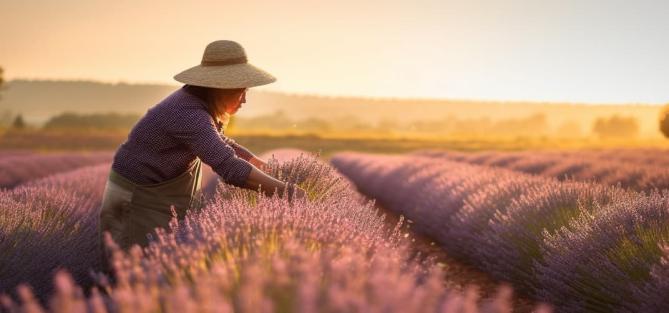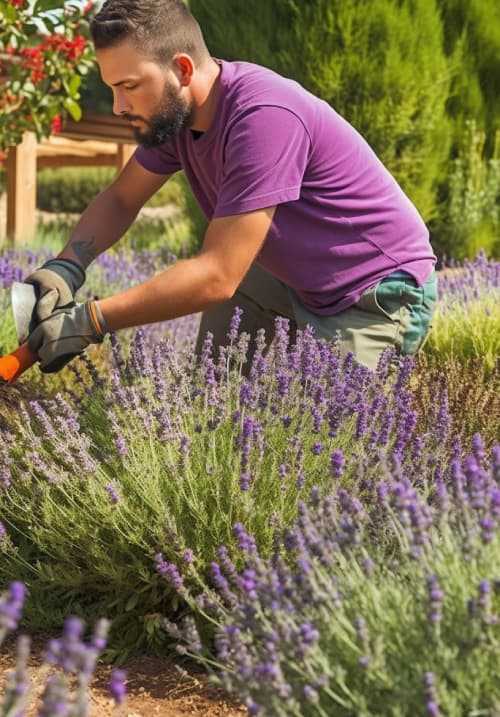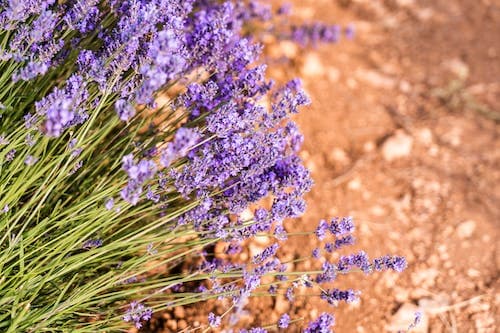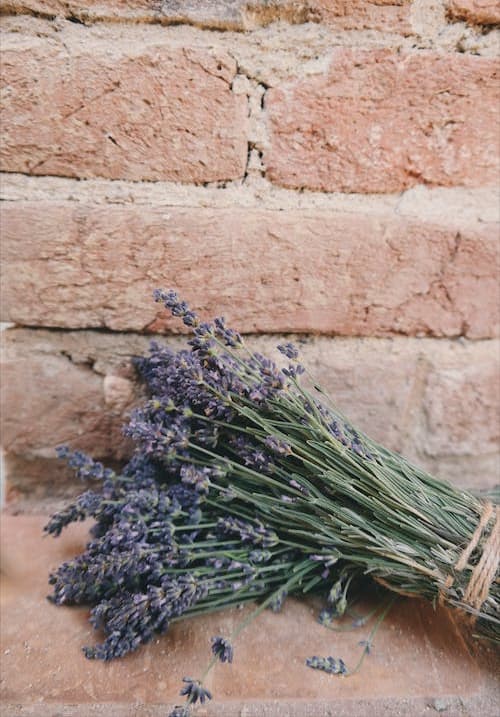MUSEE DE LA LAVANDE LUBERON- 276 Route de Gordes -CS50016- 84220 COUSTELLET
04 90 76 91 23 |

Each day, we share with you our passion for this delicate bleue flower.
Born thousands years ago in the heart of Haute-Provence, it offers us its benefits and all of its charm with its delicious perfume representing south of France.
Contact us for any request or questions, or let yourself be seduced by the organic cosmetics range and niche perfumes we elaborate while having the greatest respect of nature.
Shop le Château du Bois at the Luberon Lavender Museum

How and when to prune lavender?
How and When to Prune Lavender?
Whether you've planted it this year or you've had it for a long time, your lavender will always benefit from a good pruning. It's a perennial, hardy plant that requires a little bit of pampering with scissors, shears, or a sickle once a year. Lavender is undoubtedly one of the symbols of Provence. While its scent transports some people to vacation memories, for others, it's synonymous with sunshine. With its dense, bushy growth, it adds delicate flowers and a unique fragrance to terraces, flower beds, and garden borders.
Why Prune Lavender?
Lavender is actually a shrub, which means it produces branches and wood as it grows. In the wild, lavender becomes bare at the base as it forms its wood. And under the weight of the branches, the bushy shape tends to sag.
Therefore, regular pruning of lavender helps maintain a beautiful bushy and naturally spherical shape. Annual pruning also extends the lifespan of your plants, as they'll be less fatigued. That's why it's recommended to prune your lavender plant or lavender border every year, with flowering occurring once a year.
This will help them maintain a pleasing appearance and enjoy abundant blooming every summer.

When to Prune Lavender?
Lavender pruning is done once a year towards the end of the flowering period. It's important to note that the flowering period depends on the lavender variety you're growing as well as the weather. As a general guideline, pruning takes place between August and September. It's best to take advantage of the blooming period and then prune when the flowers have faded; visually, they will appear gray and tightly closed. Lavender pruning is important and should be done from the first year of flowering to allow your plant to thrive in the following year.
Handy tip: In the first year, you can cut each new flower stem with scissors as soon as you see a new one appear. This will help your plant grow much faster!
How to Prune Lavender?
Lavender is a plant with persistent foliage. Therefore, you should cut its stems and flowers while preserving its foliage. Trim it close to the foliage rather than at the base of the plant.
For pruning, use pruning shears and hedge clippers. Pruning shears might be enough for young plants, but hedge clippers are essential for larger beds and borders.

Start by grasping bundles of stems and cut them without cutting the leaves. The leaves are located at the base of the stem. If your plant is young, cutting the leaves might cause it to regrow. However, with a more mature plant, cutting the wood means the stem won't grow the following year. So, cut as low as possible into the green part of the stem, just above the leaves and the wood. You can keep these bundles to scent your home or to collect the flowers for drying.
Once the flower stems are cut, use your hedge clippers to shape the plant into an ornamental form, giving it a nice spherical shape. Feel free to trim the foliage as needed to create the ball shape that suits lavender so well.
How to Harvest Lavender?
You can harvest lavender when pruning, towards the end of the flowering period. After pruning is done, two simple techniques are often used:
- You can make bouquets with the harvested flowers and hang them upside down to dry,
- You can also gently remove the individual flowers and let them dry flat on cotton cloths.
Keep in mind that the faded flower has already lost almost all of its natural essential oil. This essential oil is what gives the flower its delightful fragrance. So, if you want to make long-lasting lavender sachets, it's better to harvest the flowers earlier in the season, during blooming when the flowers are opening.
Lavender is particularly rich in essential oil when it's just starting to bloom. This is the precise moment when lavender growers harvest their lavender fields. Conversely, when the floral spikes are fully bloomed, they release their fragrance to attract pollinating insects, and the essential oil evaporates.
Lavender sachets are perfect for scenting your closets and repelling moths. A lavender sachet can last up to 2 years when regularly shaken to release the essential oil contained in the flowers.

How to Care for Lavender Successfully?
Lavender is a plant that requires very little maintenance. The most important aspects for enjoying beautiful blooms year after year are managing watering and pruning.
Lavender's Watering Needs
Lavender only needs a small amount of water to thrive. In the first year after planting, don't hesitate to water as needed in spring and summer. This prevents the soil from becoming too dry while allowing your plants to develop deeper roots.
After the first year, rainfall is usually sufficient unless there's a prolonged drought.
Presence of Pests
When all the conditions are right for lavender to thrive, it's very resistant to diseases. However, small pests can sometimes invade it. This is the case for cicadas, lavender gall midge, lavender bugs, caterpillars of various moths, and froghoppers.
Pruning lavender is a good time of year to inspect your plants and ensure they haven't been invaded by pests.
If you notice an insect colony, start by identifying the species. You can then spray your plant's foliage to remove as many pests as possible. Additionally, you can rely on certain natural predators such as ladybugs, lacewings, and parasitic wasps to assist you.
Using Fertilizer for Lavender
It's unnecessary to fertilize lavender planted in open ground, as its roots naturally extract the necessary nutrients from the soil.
For potted and container-grown plants, you also don't need to apply fertilizer. The replacement of some of the soil during repotting will be sufficient.
